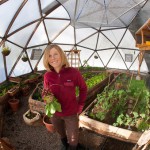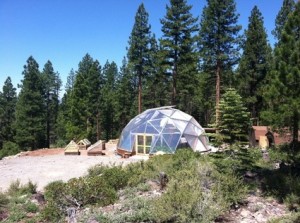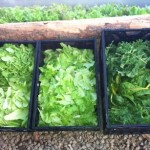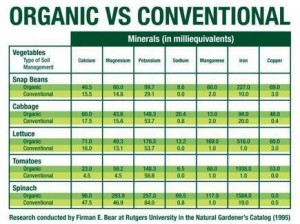To meet Susie Sutphin is to meet a whirlwind of energy. My first impression of her was at the annual Outdoor Retailer trade show where she was looking for sponsorship as a telemark skier. The year was 1998. At the time it seemed a misguided use of energy for such a small niche, but then, as publisher of the first mag devoted to backcountry skiing, who was I to talk. On second thought, maybe she deserved a closer look.
Suffice it to say before the year was out she was the first person I ever flew in for a job interview. As Couloir’s first official sales manager she proved her enthusiasm was backed with some brainiac ideas on how to grow interest in tele and backcountry skiing. In retrospect she was the energizer bunny that helped fuel Couloir magazine’s growth to international acclaim.
When she first started in August 1999 she had a ton of ideas for growing Couloir’s audience. Alas, they all depended on pockets that were deeper than what existed. Once she realized funding was the only reason her ideas weren’t implemented she turned up the throttle and the rest, as they say, is history. Before long not only had Couloir managed to overcome its name handicap, but she managed to talk me into launching a second publication, Telemark Skier magazine in 2002.
A few years later Patagonia lured Susie away, but the shores of Ventura lacked the lure of the backcountry and before long she took over management of the Wild & Scenic Film Festival national tour program so she could get back to the mountains while still doing something she enjoyed.
Planting the seed
In 2009 the festival screened a number of food related films. As Susie states on her Foodlust.net blog, “I already ate organic, belonged to a CSA, composted, grew my own vegetables and had a pretty good understanding for what was wrong in our food system. But it wasn’t until that film season when I started to make all the connections. It affected me profoundly and I knew I wanted to start steering my career path in that direction.”She left Wild & Scenic and took six months to study and learn about the sustainable food systems, not just from books, but traveling around the country getting her hands dirty working on farms and seeing the whole chain of events from planting to harvesting to delivering and marketing the food in a sustainable, organic, non-toxic way. She started blogging to share and crystalize what she was learning.
Founding the Tahoe Food Hub
As her thoughts unfolded it became apparent what to do next. In her travels and hands-on farm experiences it was obvious the weak link in the chain was on the distribution and marketing end – coincidentally her specialty. So she started a non-profit, the Tahoe Food Hub, to help small farmers and ranchers within a 50 to 100 mile radius of the North Lake Tahoe market and deliver their produce to local restaurants, small grocers, resorts and schools.Know your Farmer
I joined her for a trip to Grass Valley last summer to find out what the Tahoe Food Hub was all about. That’s when I learned she was picking up produce from small “organic” farmers. I used the word organic in quotes because, as Susie explained, “what’s more important than being certified organic are farming practices that are sustainable. I call it the Know Your Farmer Certification. You don’t have to be certified to be able to grow food using good ecological farming practices.” The food hub shares the stories of its farmers so consumers can understand better where their food comes from, who grew it and how it was grown. Food with a story tastes better and makes you feel better for what you are supporting. ..
It was a pretty casual affair, with the farmers arriving in small pickups with baskets of produce – blackberries, red leaf and butter lettuce, carrots, huge scallions, kale, beets, and the unexpected surprise of the day, grassfed beef All were proud of their produce and took the time to show off what they were delivering, except Mark and Ann McEwan who couldn’t really show off their steaks the same way the textures and colors of the fruits and veggies could be shown.
Instead, they had a story to tell, one they knew wouldn’t get passed on at the grocer’s counter, but worth hearing. At a minimum, to raise good beef, or any livestock for that matter, the final product is dependent on what they eat. Grassfed is key. “Farm finished” is what Susie suggests you look for, meaning the animal was raised on the same farm its whole life with good humane practices. They didn’t say it loud, but they did add that they thought their beef held the edge because the grass itself was fed by the Yuba river.They gave me a pair of steaks to try for myself. That night Deb and I both agreed, the McEwan Farm steaks reminded us more of Buffalo, or Elk than the usual burnt flesh we pull from the Bar-B-Q called beef. It confirmed our belief there’s a difference in organic food compared to the run of the mill GMO fake food found at Safeway or Krogers, and confirmed Susie’s stance that even within the organic world, local beats certified any day of the week.
Fixing Food
By handling the physical deliver and covering marketing to the Tahoe region the Tahoe Food Hub frees up the local farmers time to improve yields, plant more, and relax some too, while the logistics of sales and distribution is handled. Echoing a sentiment she read in an issue of Mother Jones, Susie says, “the best way to fix the country is to fix the food.” No arguments to that here.
© 2014
Related links:
Tahoe Food Hub
FoodLust.net





Recent Comments